

TENNIS COURT RESURFACING AND CONSTRUCTION
Serving the San Francisco Bay Area and Northern California.
We are many things – your tennis court construction company, tennis court contractor, tennis court builder, and tennis court installation company. We also do tennis court resurfacing and tennis court painting. We welcome the opportunity to assist you with your backyard tennis court project.
Serving the San Francisco Bay Area and Northern California.
We are your tennis court construction company, tennis court contractor, tennis court builder,
and tennis court installation company. We also do tennis court resurfacing and tennis court painting.
We welcome the opportunity to assist you with you backyard tennis court project.
Serving the San Francisco Bay Area and Northern California.
We are your tennis court construction company, tennis court contractor, tennis court builder,and tennis court installation company. We also do tennis court resurfacing and tennis court painting. We welcome the opportunity to assist you with you backyard tennis court project.
BACKYARD TENNIS COURT PHOTOS
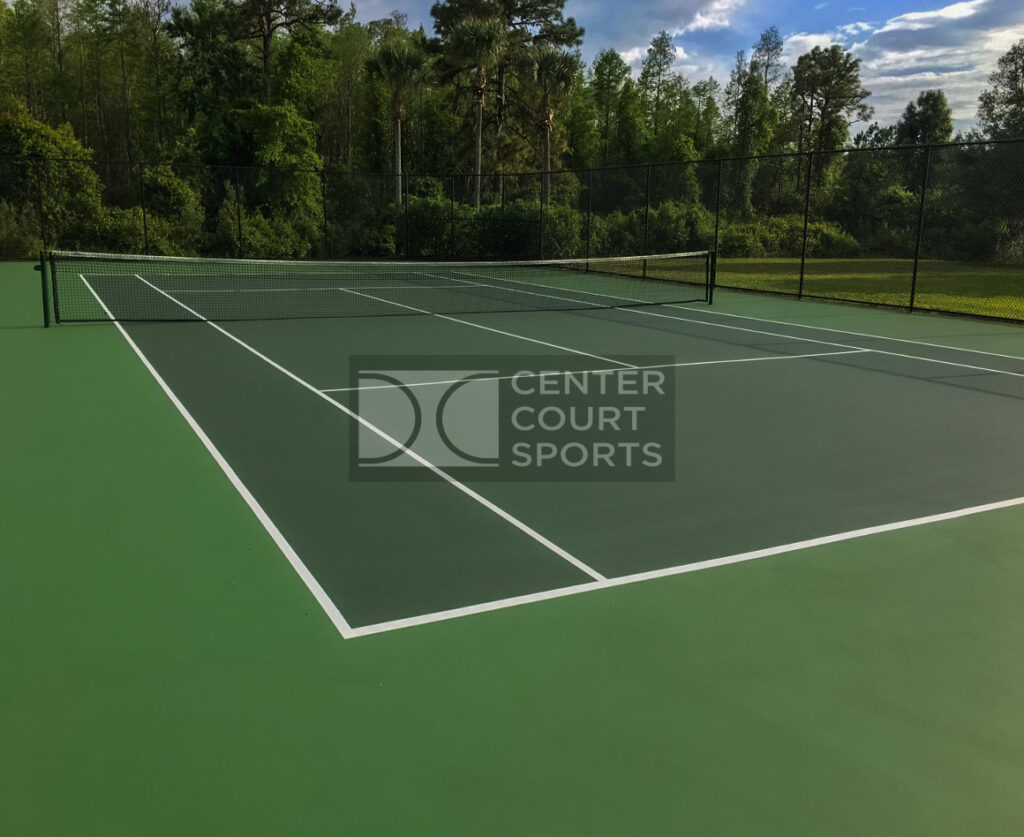
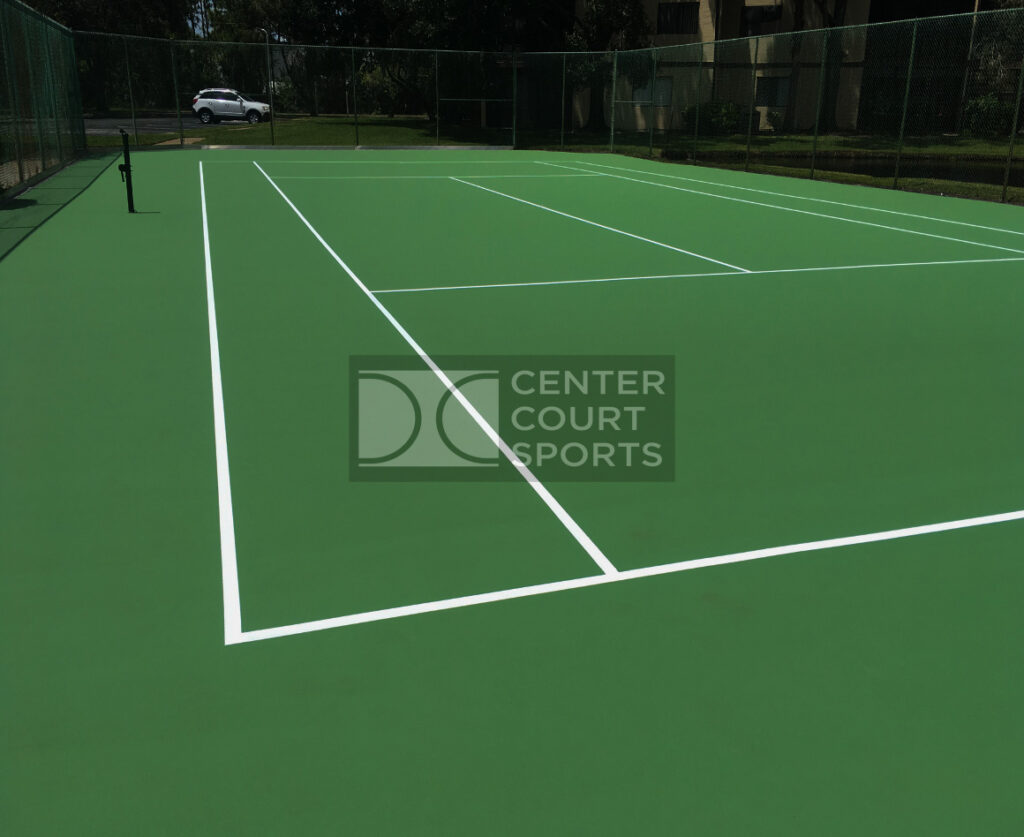
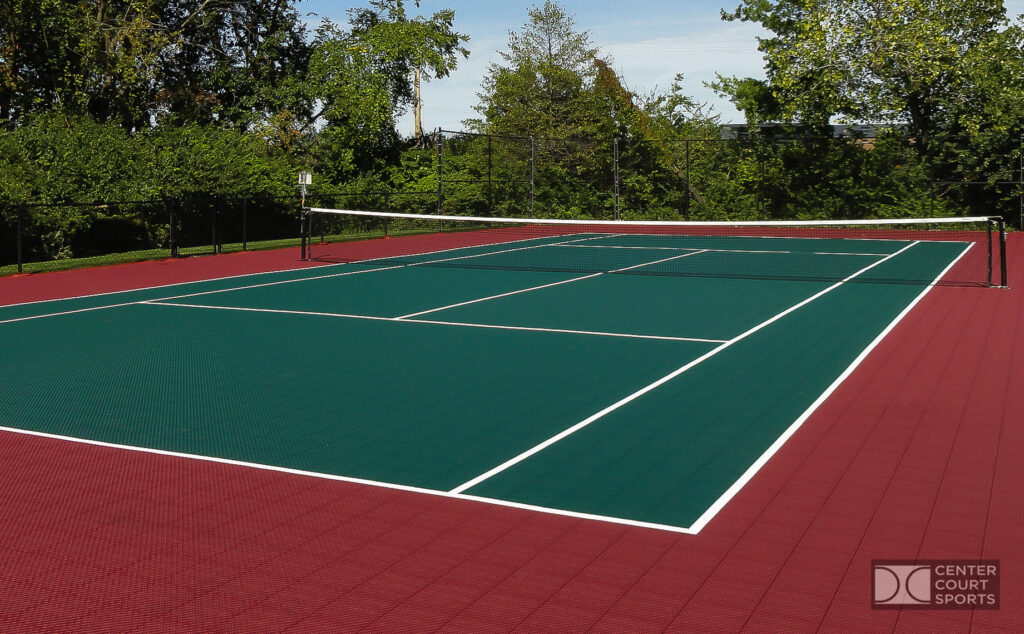

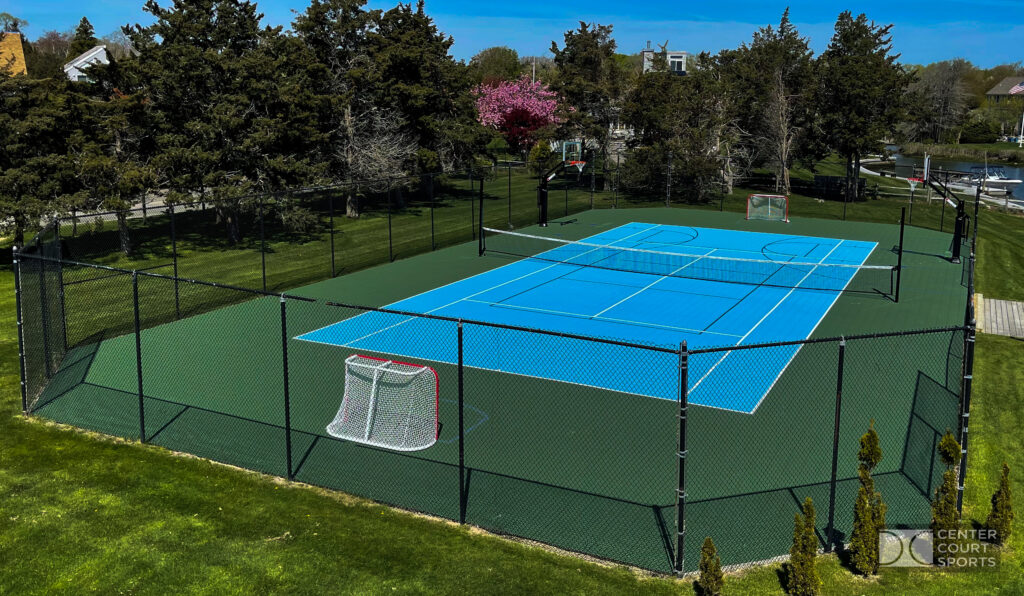
TENNIS COURT RESURFACING
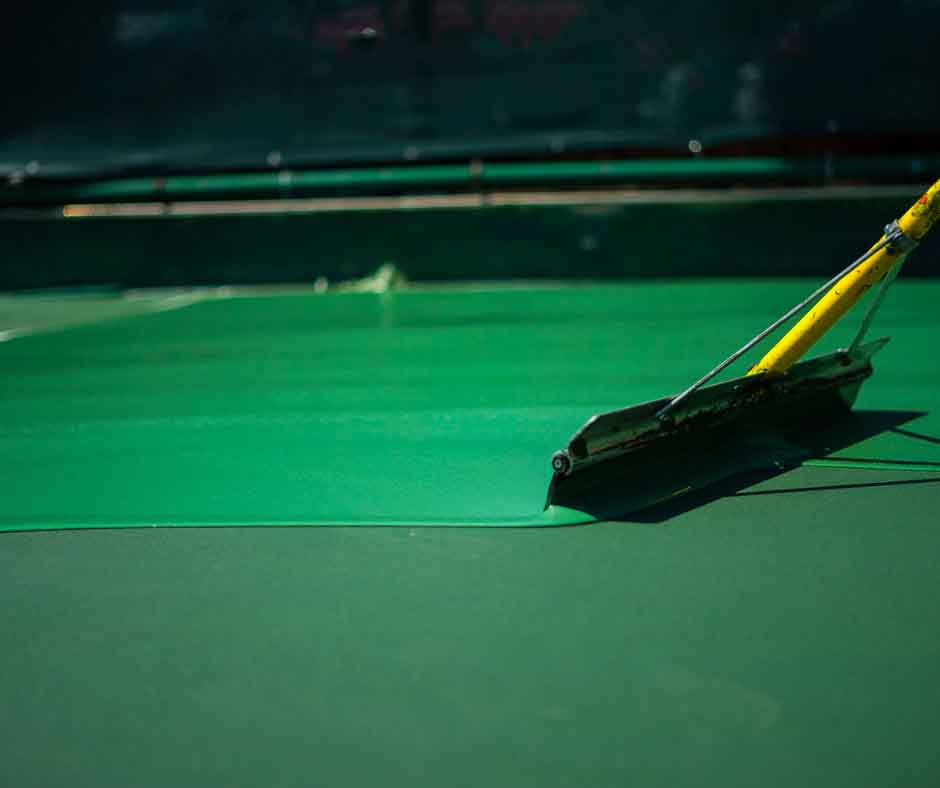
Tennis court resurfacing is needed after a number of years. For tennis courts which see frequent use, resurfacing is needed every 4-5 years. Another common project is for tennis courts to be resurfaced and to have additional court lines added.
For commercial tennis courts, four pickleball courts and one full court basketball court line can be added. For backyard tennis courts, customers commonly add one or two pickleball and half court or full court basketball court lines.
To further enhance your tennis court, you may want to replace your worn out tennis net posts and tennis net. As your local tennis court painting company, we will guide you through all the available options when choosing to refresh your tennis court surfacing.
TENNIS COURT CRACKS
- Hairline cracks – these are cracks which have minimal to no separation between each side of the crack. These cracks are repaired by cleaning them out, and then filling them in with an elastomeric caulk.
- Wide cracks – these are cracks which have some separation between each side of the crack. Depending on the severity of the crack, we will either use a cement court patch binder mixture, or an elastomeric fiber reinforced caulk.
- Fault cracks – these are cracks in which one side is higher than the other. These are the most difficult cracks to repair and usually indicates severe settling problems underneath the court.
- Tennis net post cracks – these cracks occur because of differential settling. The concrete footing of your tennis net posts are more stable than the asphalt surrounding it. When the asphalt settles over time around the net posts, it causes cracks to appear where the concrete footing meets the asphalt.
- Settling – this usually happens at the edges of the tennis court. Minor settling at the corners is repairable, but settling over a large area may require a court rebuild.
- Bubbling – this can happen due to concrete footings not curing long enough, or if the court paint or primer does not dry fully before the next application, or if water gets under a court.
- Low spots/high spots – these can occur over time, or as a result of defective construction.
- Tree root heaving – a common problem which requires the court surface to be cut away, the roots removed, and the base rebuilt and surfaced.
- Delamination – this occurs when the surfacing peels away from the base. This usually happens on older courts which have not been maintained properly.
- Rust spots – Asphalt (especially recycled asphalt) can contain iron pyrites. This can lead to rust spots in the asphalt which will bleed through and stain the tennis court surfacing above.
BACKYARD TENNIS COURT REPAIR
- There are three basic approaches to tennis court repair and resurfacing.
- The first approach is to simply repair and resurface. This is the lowest cost method, but has the highest risk of the cracks opening up again.
- The second approach is a partial overlay. We install an overlay over the cracks, then resurface over the overlay. The overlay (also called a slipsheet) covers the cracks which allows the cracks to widen while still maintaining the surfacing above the crack. This costs more, but reduces the risk of cracks opening up again, but does not prevent new cracks from opening up in other areas not protected by the overlay.
- The third approach is a complete overlay. We recommend a complete overlay if there are a lot of cracks. A complete overlay covers the entire court. This is the most costly approach, but also tends to have the best results as the overlay protects against cracks from opening up again anywhere on the court.

BACKYARD TENNIS COURT OVERLAY

An overlay can either be a partial overlay, or a complete overlay. If you have more than about 600-700 linear feet of cracks, it may make more sense to do a complete overlay rather than a partial overlay. Partial overlays are priced per linear foot, and at a certain point it makes more sense to cover the entire court rather than just the cracks.
A partial overlay is adhered to both sides of the crack, with no adhesion directly over the crack. This allows the crack to widen under the overlay without affecting the court surfacing above it. Partial overlays tend to cost less than a complete overlay because it just covers the repaired areas, and not the entire court. However, it does not protect against cracks opening up in new areas.
A complete overlay is a reinforcing material which covers the entire court. They are 12′ wide sheets which are installed the length of the court, until the entire court is covered. Both repaired and unrepaired areas are covered. Covering the unrepaired areas prevents new cracks from forming. Complete overlays are a significant investment, but it is often worthwhile insurance against potential new cracks, especially on older courts which are in poor condition.
As your tennis court resurfacing company, we have partnered with NGI. A cross section of NGI’s complete overlay product is shown.
COST TO RESURFACE TENNIS COURT
- As tennis court construction methods vary, each tennis court is unique. However, here are some things to consider for your project.
- Repairs. How many cracks does your court have, and how severe are they? Hairline cracks are easy to repair. As cracks get wider, it becomes more difficult to repair them. Does your court have high and low areas in which water tends to pool? If so, do you want them repaired? Some customers are okay with having the high and low spots, especially if they are in the out of bounds areas. Other customers want as close to perfectly flat as you can get, and so the cost to resurface the tennis court will be higher.
- Net posts and net. Do you like your existing net post and net? Modern tennis nets are secured at each end with a loop or screw. Older tennis nets are often secured with a knot hidden inside the net post. So it may not be possible to just replace the net with your existing net post. If you would like to replace your net posts, that needs to be done before surfacing as a large area will have the removed around each net post in order to break the concrete footings. Your center anchor may also need to be replaced. In many cases the anchor is broken or rusted and brittle, and likely to break.
- Court lines. Are you looking to add other court lines such as pickleball and basketball? There are many options when it comes to adding pickleball nets to a court. Obviously the basketball hoop will have to be installed as well. We can do a court drawing so you can see what the lines will look like. Court lines are very time consuming to mask and paint, and so the more lines, the higher the cost to resurface your tennis court.
- Color choices. Two colors is most common. One color takes less time to surface than two colors. Three or more colors takes the most time. Custom logos require a special type of custom single use stencil. The plastic ones won’t work!
- Access. Court paints are delivered in heavy 5 gallon, 30 gallon, and 55 gallon drums. How easy is it to move materials to the court area? Does the court have access to nearby electrical and water?
- Location. Depending on your location, the cost to resurface your tennis court may be higher due to travel time and lodging.
- Fencing. We do not do fence repair, but we can remove an old fence and install a new one.
TENNIS COURT RESURFACING FAQ
While there are some similarities, the materials used as well as the application process are quite different. When you are painting a wall or ceiling, you are starting off with a perfectly flat surface. A tennis court however usually has cracks, high spots and low spots which need to be repaired before any paints are applied. If the tennis court is damaged enough, crack mitigations measures such as a court overlay may need to be installed. Next, the entire court must be cleaned thoroughly. Finally, multiple coats of acrylic resurfacer and court colors are applied. Most courts have three total coats, but if the court needs a lot of repairs, as many as five coats may be necessary. The various layers and repairs are applied with specialized tools. Tennis court resurfacing is lot more complicated than most people think!
Acrylic resurfacer is the base coat which is applied after the repairs have been made. It is black in color, and after mixing has a large amount of coarse sand. This allows the resurfacer to fill in low spots around the court. After the resurfacer is applied, then the color coats are applied, usually with finer sand for a smoother playing surface.
We use a water based acrylic paint. However, this is very different than the paint you would use for your house. This paint is formulated specifically for outdoor courts, and holds a large amount of fine sand to give the court texture. The paint also has additives such as binders which help suspend the sand evenly in the paint after mixing. This paint is also formulated to adhere well to concrete or asphalt.
This is very subjective, and is different for all customers. It depends on how much use the court gets, how well it is maintained, and the weather. For higher usage or commercial courts, resurfacing every 3-5 years keeps the colors looking fresh and minimizes future maintenance problems. For lower usage courts, you can resurface every 5-7 years, but court may start to look a bit worn, and it may lead to more maintenance problems. If you are not sure, reach out to us today and send us some photos! We would be happy to send you a tennis court resurfacing quote
TENNIS COURT DIMENSIONS
The suggested court size for your tennis court will depend on the space available,
court usage, potential obstructions, and many other factors.
Every tennis court we build is unique. However, here are some general guidelines.
The suggested court size for your tennis court will depend on the space available, court usage, potential obstructions, and many other factors.
Every tennis court we build is unique. However, here are some general guidelines.

Tennis court dimensions
(USTA recommended)
60’W x 120’L (residential)
80’W x 140’L (tournament/competitive)

Tennis court dimensions
(Reduced, USTA recommended)
56’W x 114’L
BACKYARD TENNIS COURT CONSTRUCTION

There are only two industry approved ways to build a tennis court – with either an asphalt base, or with a post-tension concrete base. Most existing tennis courts have been built with an asphalt base. Asphalt bases are cheaper to buid. However, asphalt courts tend to start cracking after about 10 years or less. After cracks start to appear, they will get wider over time, and cracks may appear in new areas. Eventually asphalt courts will not be repairable, and may require a complete replacement.
Post-tension concrete is growing in popularity as the superior alternative to asphalt courts. While requiring a higher initial investment, post-tension concrete courts have an expected lifespan of 25 years or more. When evaluated over the expected lifespan, post-tension courts have a lower total cost of ownership when factoring in asphalt repair costs, and the potential need for complete court replacement.
Standard 4″ rebar reinforced concrete is not an acceptable method to build a pickleball court. This type of concrete requires control joints on the surface. The joints are weak points which even after being filled, will likely lead to cracks on the court surface. Furthermore, standard concrete has none of the crack resistant benefits of post-tension concrete.
We specialize in post-tension tennis court construction. Our post-tension cables come from a plant which is certified by the Post-Tension Institute. We are proud to be one of the only tennis court builders in Northern California who can offer this superior method of tennis court construction.
POST-TENSION
TENNIS COURT CONSTRUCTION
- Durable – post-tension courts have an expected lifespan of 25+ years, as compared to 10 or less years for asphalt courts.
- Minimizes and controls cracking – the cables keep the concrete under compression, preventing cracks from forming, and preventing any cracks that do form from expanding after being filled. Asphalt has no resistance to cracking. Any cracks that do form leads to moisture intrusion which further damages the asphalt.
- No control joints – post-tension courts do not require control joints, which means there are no weak points which would likely lead to cracks.
- Controls deflection – on expansive soils or on courts built on a slope, the strength and added stiffness reduces the amount the slab will bend and possibly fail. This means that the concrete is less likely to settle at the corners and edges.
- Resists root damage – post-tension concrete is 5.5″ thick, as compared to 1-2″ for asphalt, and 4″ for rebar reinforced concrete. This makes post-tension concrete highly resistant to root damage. Root damage is one of the most common causes of cracking in asphalt courts.

BACKYARD TENNIS COURT CONSTRUCTION FAQs
There are many public tennis courts here in the Bay Area. However, they can get very crowded, especially on the weekends. With your own court, you can play in the privacy of your own home. And you do not need to drive anywhere or wait in line! Finally, a tennis court is a beautiful amenity that you can add to your home or facility. Having your own tennis court is on of those amenities that truly distinguishes a high end property.
The tennis court cost is different for each project. The starting point is the size of the court. Are you looking for a regulation 30′ x 60′ court? How much site prep is required? If the court location is on a slope, then the excavation, grading, and dirt offhaul will add to the cost. In addition, access is very important. We dig with an excavator. If there is no access, then hand digging might be the only option. This would increase the tennis court cost.
There are two ways to build a backyard tennis court. One way is post-tension concrete. The other is with asphalt. While post-tension concrete is a higher initial investment, it has many benefits. It reduces the severity of cracks. This gives post-tension courts an expected lifespan of 25+ years. In comparison, asphalt courts will tend to start cracking after 10 years or less. Asphalt cracks easily because it shrinks over time. Also it cracks due to the weather. Also, asphalt becomes more brittle as it ages. After asphalt starts cracking, the cracks will tend to worsen over time. This will likely require constant repairs over time. As a result, asphalt courts may eventually need to be completely replaced.
The best surface for a backyard tennis court is an acrylic hardcourt. When you see professional tennis on TV, it is usually being played on an acrylic hardcourt surface. We also install modular tile courts. However the bounce is not quite as good or consistent.
That depends on the condition of your backyard tennis court. Most older hardcourts will have some cracks in need of repair. If both sides of a crack are the same level, then it can usually be repaired. However, if one side of a crack is higher or lower than the other side of the crack, those are much more difficult to repair. Low lying “birdbaths” which collect water can usually be filled. High areas are more difficult and costly to repair. Court repairs can easily cost more than the cost of the resurfacing. Every court is different, and for this reason repair costs will vary.
- Standard net posts. These are your traditional 3′ tall net posts, available in either green or black. They are in ground posts which are secured with a concrete footing.
- Height adjustable net posts. These net posts are 10′ tall, and are height adjustable for other sports like volleyball, pickleball, and badminton. These posts are available in black. These are in ground posts which are secured with a concrete footing.
- Ground sleeves – available for both standard and height adjustable net posts, this allows you to remove the posts when not in use.
Almost all tennis courts will have fencing, for ball containment. We install black vinyl coated chain link fence. The typical fence height is 8-10′, with an optional dropped middle section for less obstruction and enhanced viewing in the center area. As your local tennis court builder, we will work with you to design your fence given your preferences, and the available space of your home or facility.
Court lighting is specialized and is thus different from most other kinds of lighting. Court lighting faces straight down at the court. This is important for several reasons. Glare is minimized when lighting is downward facing. Also, this is important to ensure even coverage of lighting across the entire court.
The typical time to build a tennis court is about 6-7 weeks. This is because we need to let the post-tension concrete cure for a full 30 days before the acrylic surface is applied. As far as the start date, that depends on you. We require a signed contract and deposit to add your project to our queue. We start projects in the order in which we receive a signed contract and deposit. So the sooner you make a decision, the sooner we can potentially start your project.
CONNECT WITH US
If you like what you see so far, please consider liking or following us on your favorite social media! We regularly post photos of completed projects, as well as updates about the company.
Help us build a community of like minded court enthusiasts!
If you like what you see so far, please consider liking or following us on your favorite social media!
We regularly post photos of completed projects, as well as updates about the company.
Help us build a community of like minded court enthusiasts!



